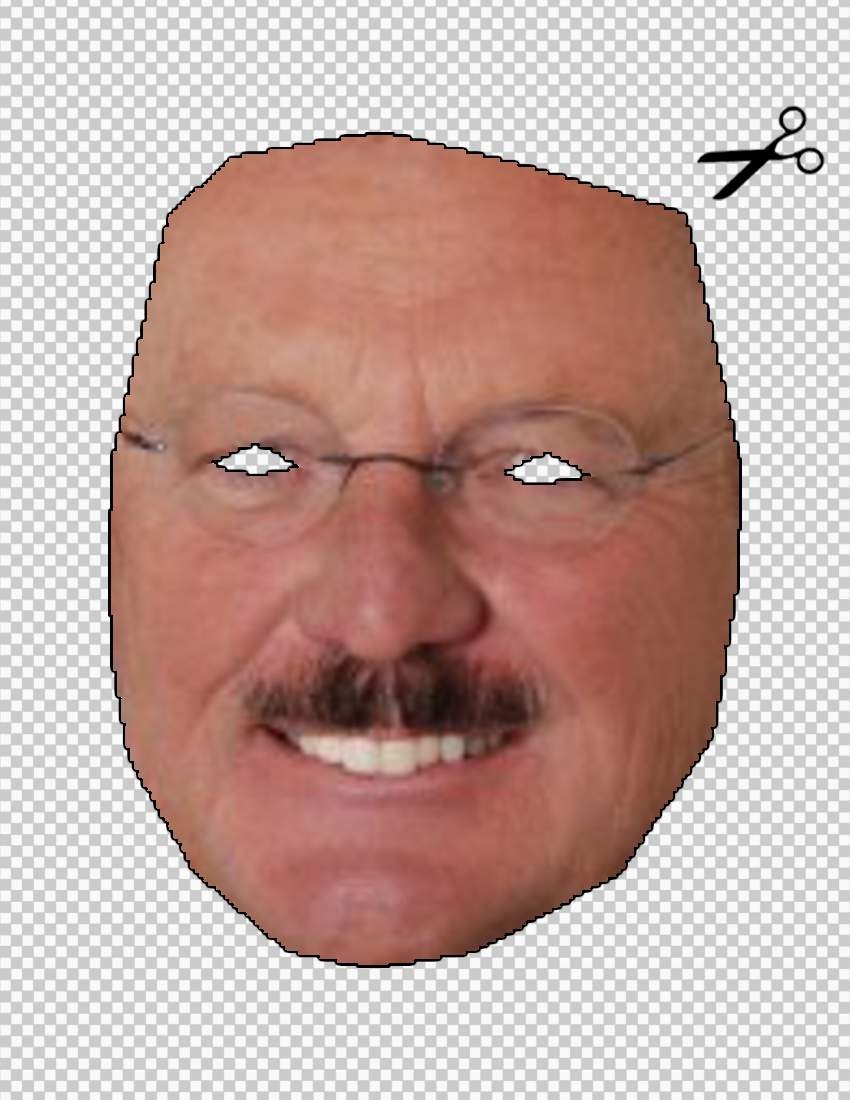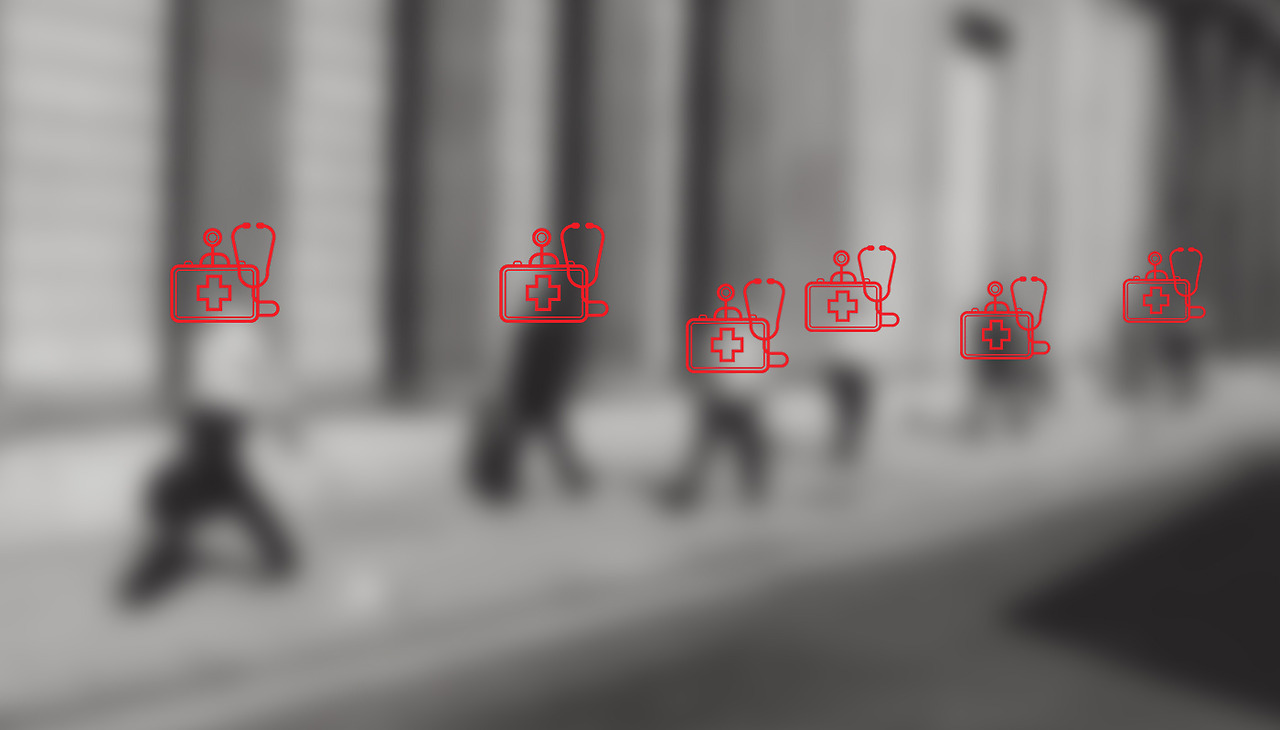Biometric technology executives profit by face-snatching the rest of us. We figured we’d resist by face-snatching them instead.
Facial recognition technology turns your face into code that can be archived and traded among strange and suspect parties. It’s time we conspire to shield our meatsacks from such intrusions and reclaim what encryption means in the context of biometric technology. You can, in fact, encrypt your face.
You Probably Think This Bot Is About You
Where you seek patterns, you will find them. In humans, we call this apophenia: seeing a face in a cloud, hearing voices in white noise, or divining cosmic significance from a chance meeting with an old friend.
Machine learning algorithms, which are used by computers to identify relationships in large sets of data, echo our pattern-seeking tendencies, since pattern recognition is what they’re designed for. When seeking to program learning algorithms with human intelligence, we inevitably include our peculiarities and paranoias. Like the human brain, machine learning algorithms arrive at shallow, inappropriate conclusions from ingesting sprawls of data.
But when it comes to machines, paranoid assumptions about the world are mutually reinforcing: When they see the false patterns we see, they validate the faults of our own pattern-seeking tendency through the illusion of computational rigor. Seeing our own judgments reflected in the algorithm, we feel more confident in its decisions.
The New Inquiry’s Conspiracy Bot condenses this recursive symbiosis. Just like us, our bot produces conspiracies by drawing connections between news and archival images—sourced from Wikimedia Commons and publications such as the New York Times—where it is likely none exist. The bot’s computer vision software is sensitive to even the slightest variations in light, color, and positioning, and frequently misidentifies disparate faces and objects as one and of the same. If two faces or objects appear sufficiently similar, the bot links them. These perceptual missteps are presented not as errors, but as significant discoveries, encouraging humans to read layers of meaning from randomness. If a “discovered” conspiracy finds some “true” reflection in the “real” world, such as linking two politicians that are actually colluding—and due to the sheer number of relationships it produces, it’s statistically likely—then the bot’s prediction appears more valid to the viewer, heightening the plausibility of its other predictions. Thus the nauseating cycle loops once more. First as news, then as fake news.
“In conspiratorial practices, we find all kinds of alternative methods to approaching, absorbing, and organizing knowledge. This is something altogether different and more elegant than excavating the actual ‘truth.’”
Issue 61 is out today. Here’s what our editors have to say about it.
The CONSPIRACY issue is out today (at least that’s what we want you to believe).
Click through to read about how anti-terror legislation works to conceal the terror of the state, how we’re all bad protestors now, how biopunk subverts biopolitics, how the SWAT rhetoric of “safety” breeds paranoia and justifies harm, and how the anti-paranoid conspiracy theory displaces anxiety so that power can be named.
Plus! This issue features a suite of special projects exploring technology’s ability to outsource our paranoia to the machine.
“In the evangelical perspective, spreading the costs of welfare and healthcare beyond one’s more or less symbolic but otherwise private household, facilitates moral hazard and emboldens sin. Where such a state extends care, it does so as a philanthropic benefaction that retains paternal control over moral conduct as a condition of care, which is how religious conservatives perceive the tax cut that the AHCA promises to deliver: as part of the restoration of an oikonomia, or a well-ordered household, which arranges society in qualitative categories of race, gender, and sexuality.”
Angela Mitropoulos reckons with the AHCA’s white evangelical calculus of value and care
“Peruse business literature, and you will learn that Columbus was the world’s first entrepreneur, Plato’s Republic the ideal innovation hub, Leonardo da Vinci a model cross-platform disruptor, Ralph Waldo Emerson a model innovator…
Ben Horowitz’s lecture stands out, even in this genre, for the arrogance required to interpret The Black Jacobins as a business success manual and to imagine Toussaint L’Ouverture as a Thought Leader on par with the CEO of Netflix.”
How Silicon Valley coopts history for its own autocratic ends
“History is not a dead zone, a list of past events. History is a living, recurring threat to the current racist capitalist order.”
“We must learn to look differently. Look at these quiet images and hear the grammar of Black life.”
Tina Campt’s new book Listening to Images engages a diverse archive of “quiet and quotidian” photos from the Black diaspora towards a project of Black futurity.
Full review here: https://thenewinquiry.com/see-hear/
Spell-Check Nation→
Presidential claims to legitimacy have always been bound up in violence–so why do people continue to insist that Trump act more presidential?
“By using a contemporary biological vocabulary that rejects determinism, we might find new forms of representation and protection against the medical and legal standards that substantiate oppressive policy. Biological autonomy requires a vocabulary full of choice and change. A living being is one in a state of perpetual disequilibrium, regulated through leaking…
embracing leakiness has the potential to be a productive experience for an individual, rather than a repressive tool of the state.”
Institutions track us through our blood, sweat, and tears, but the answer is not to be less leaky
“Self-defense” throughout American history has never been an equal-opportunity recourse. Instead, pious abstractions about a supposedly universal right to employ violence in defense of one’s person have, from the start, reflected chauvinistic calculi of which persons are deemed valuable or disposable in the first place. From the colonial era to the Civil War, to the frontier to modern suburbia, some lives have mattered more than others. And for all the lofty rhetoric to the contrary, our courts and norms have only really respected certain selves as worthy of defending.”











